Our editors independently select these products. Making a purchase through our links may earn Well+Good a commission
I’ve long been aware that the beauty industry has a waste problem, but it wasn’t until I spent two weeks tracking my trash that I realized just how much I’m contributing to the issue.
Experts in This Article
sustainability expert and speaker
As a beauty writer, the amount of non-recyclable packaging that comes through my bathroom is jarring (it’s part of the job, but it still isn’t an excuse), as is the number of tissues and cotton swabs that go straight into the trash when I’m done using them. The experience of clocking my waste opened my eyes to the fact that I need to do better, so I chatted with sustainability expert Jhánneu Roberts to learn ways to create a sustainable beauty routine.
Her biggest (and most important) tip? There’s no “one size fits all” when it comes to creating sustainable practices—you have to find what works for you in order to ensure you’ll be able to stick with the swaps you’re making. “It’s all about finding that balance,” says Roberts. “It’s all about working with what you have, and being intentional about the things you’re buying and bringing into your home, because no one’s ever going to be perfect.”
Below, she shares eight ways you can make your beauty routine less wasteful—try them all on for size, and see which fit best into your lifestyle for the long haul.
How to create a sustainable beauty routine
1. Opt for multi-use products
Not only are multi-purpose products a win for your wallet (who doesn’t love a two-for-one deal?), but they’re also better for the environment. “Ideally, I try to find products that are multi-use so I’m just using less in general,” says Roberts. “So if I’m using a highlighter that maybe I could also put on my eyes that’s fewer products I have to use, even if it does come in plastic.” Even if an item isn’t marketed as multi-purpose, you can still get creative and find multiple ways to use it. There’s no reason why a creamy lipstick can’t double as a blush, or a brow pencil can’t also be used as a subtle eyeliner.
2. Find ways to make disposables reusables
Think about the items in your routine that you use once and then toss, like makeup wipes and cotton rounds. In many cases, there are reusable options you can use instead.
“I don’t use makeup wipes. I have cotton rounds ($12) that are reusable, and you can just easily throw them in the wash,” says Roberts. “For the times when a small cotton round isn’t enough, I have a stack of small washcloths ($12) that I’ll use. You can also DIY your own makeup wipe by getting the cotton round, putting it into a container ($36 to $64), and adding your favorite toner or a little bit of soap and water so you can have them ready to go.”
Personally, I use a lot of individually packaged alcohol wipes to sanitize my beauty tech tools and finish off my gel manicures. Because these wipes come in a paper-and-aluminum packaging, Roberts says they’re not recyclable (“you can’t really recycle something that’s mixed like that,” she explains), so I’m better off filling a reusable spray bottle ($8) with rubbing alcohol and spraying it onto reusable rounds instead.

Chloven 30 Pack Organic Reusable Makeup Remover Pads — $12.00
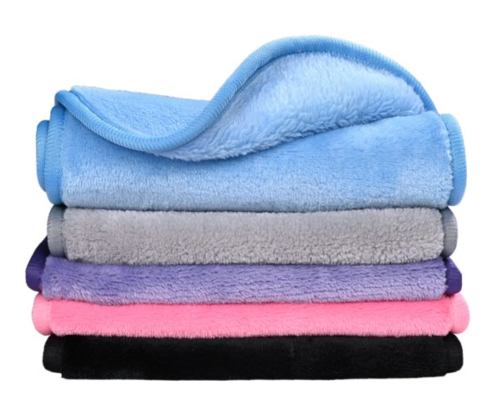
Byootique 5 Pack Makeup Remover Towel Facial Cleaning Cloth — $12.00
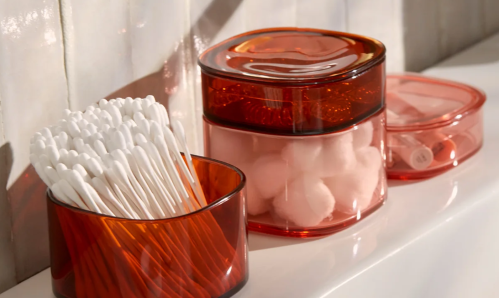
Open Spaces Storage Gems — $36.00 to $64.00
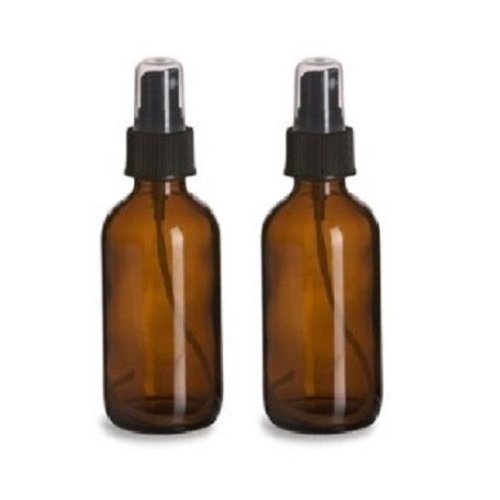
2 Amber 4oz Boston Round Glass Bottle — $8.00
3. Use biodegradable items when you can
Certain things you use in your beauty routines—like cotton swabs, dental floss, and tissues—are inevitably going to wind up in the trash, because they don’t exactly lend themselves to reusability (the idea of double-dipping on a snotty tissue or waxy Q-tip is… not so appealing). In these cases, opt for biodegradable options. “You can buy cotton swabs ($10) that are 100 percent cotton, no plastic, then you can actually compose those,” says Roberts. EcoTools also sells biodegradable makeup sponges ($8) that you can reuse for up to 30 days and then compost.

Bamboo Cotton Buds — $10.00

EcoTools Bioblender Makeup Sponge Duo — $8.00
4. Use refillable beauty products
Thankfully, many brands have smartened up to the fact that single-use plastic packaging is a big problem, and have started offering refillable options instead. These, says Roberts, are worth investing in. “If you go on Credo Beauty, they have a ton of different options that are refillable,” says Roberts. (Though Roberts does point to the fact that some of these items are quite expensive, which can be hard for to swing for some consumers, but there’s quite a number of options she loves and feels are worth it.) “There’s Kjaer Weis they have foundations ($46 to $70) and blushes ($32 to $56), where you buy the nice metal container once and then you just buy the refills.”
There are also brands like Mob Beauty that allow you to customize eye shadow palettes by getting an empty palette ($10) and filling it with individual shadows ($12) of your choice. “I’m sure there have been times when you bought palettes in the past and used like three colors,” says Roberts. “You don’t use the whole palette and it’s so wasteful. Find brands where they give you the option to buy what you want versus buying the whole set or palette or whatever that’s just going to end up going to waste.”

Kjaer Weis Refillable Cream Foundation — $46.00 to $70.00
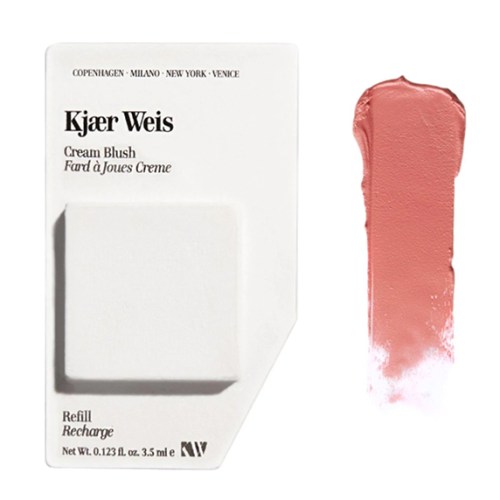
Kjaer Weis Refillable Cream Blush — $32.00 to $56.00
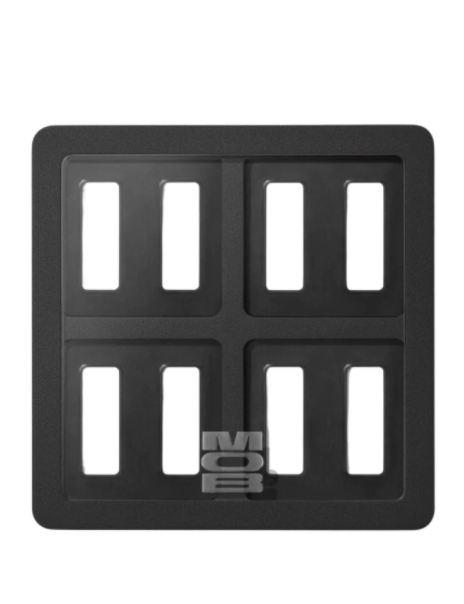
Mob Beauty RePurpose 4+ palette — $10.00

Mob Beauty Matte Eyeshadow Refill — $12.00
5. Source products that come in aluminum, glass, or recycled plastic
Plastic is difficult to recycle, and as a result, only 9 percent of all the plastic in the world that has ever been created has actually been recycled. You can look for products made from recycled plastic (Roberts recommends PYT Beauty), which is technically a better option than virgin plastic (new plastic made from a petrochemical feedstock, such as natural gas or crude oil, which has never been used or processed before), but still isn’t ideal. “Even once you try to recycle it or throw it away, it’s still probably going to end up wasted,” says Roberts.
So your best bet, she says, is to source items that come in glass or aluminum containers, which will be easier to recycle than their plastic counterparts.
6. Recycle your empties with TerraCycle
TerraCycle exists to recycle the many products that come in containers that aren’t recyclable by municipal centers. Individual brands, like Josie Maran, EOS, and Herbal Essences partner with TerraCycle so you can you can ship them your empties and have them recycled for free. You can also find more general public drop-off locations. For example, Credo Beauty, Nordstrom, and Nordstrom Rack have locations where you can bring empties from any beauty brand to be recycled.
7. Find other uses for products you don’t like
Large retailers like Sephora, Ulta, and Walgreens allow you to return used products, which means you can test something out and bring it back (and get your money back) if you decide you don’t like it. The problem with this practice, though, is that all of these products wind up going straight into the trash.
If it’s within your budget to hold on to these items, you can always gift them to a friend or find another use for them.
“I’ve tried a bunch of shampoo bars which did not work for me,” says Roberts. “And so what I’ll do is use them to clean my makeup brushes. And there’s a lot of times where I’d use like exfoliants and things like that like are too much for my face, but I can use them on my body.”
8. Set manageable parameters
As you find ways to make your beauty routine more sustainable, try not to stress yourself out. As a consumer, there’s only so much you can do and you don’t need to put all your effort into waste reduction.
“I’ve realized that I can only do so much,” says Roberts. “What it’s going to come down to is the government stepping in and requiring corporations to not produce virgin plastic and have all these regulations. But until that happens, it’s just going to be really hard for the consumer. And especially if they’re someone that’s like on a budget—finding these refillable makeup items is pretty much impossible in an affordable budget range.” In other words? Do the best you can, and make whichever sustainable swaps make the most sense for you.
Oh hi! You look like someone who loves free workouts, discounts for cutting-edge wellness brands, and exclusive Well+Good content. Sign up for Well+, our online community of wellness insiders, and unlock your rewards instantly.
Sign up for the Well+Good SHOP Newsletter
Get exclusive deals on wellness, beauty, fitness, and food products that have been hand-picked by our editors.
Got it, you've been added to our email list.











